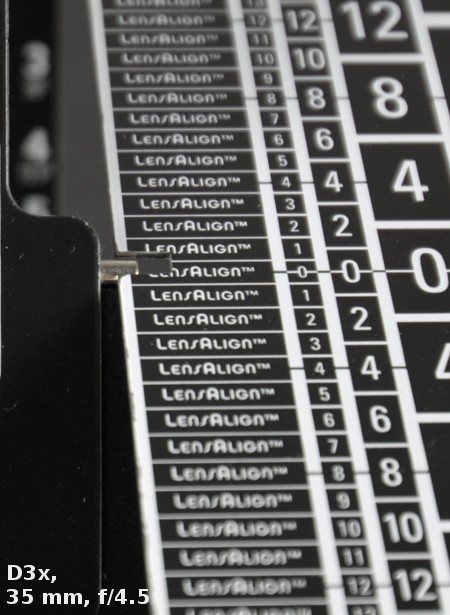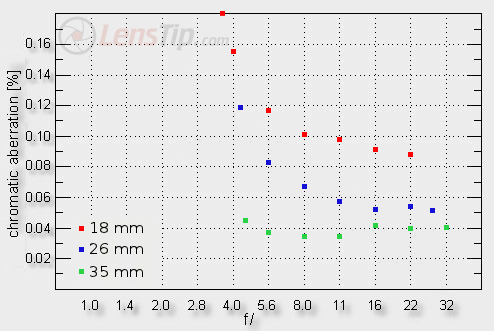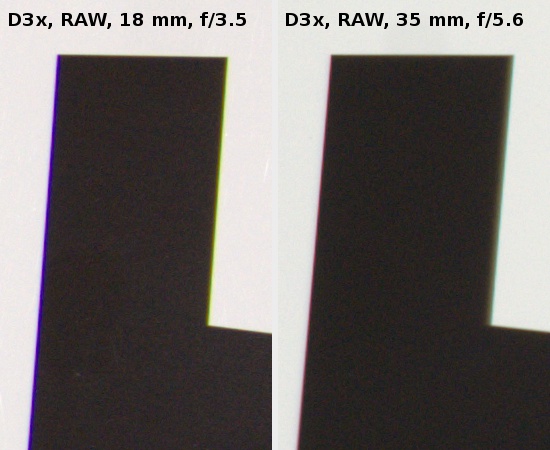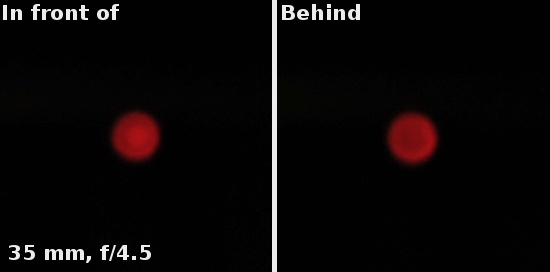Nikon Nikkor AF-S 18-35 mm f/3.5-4.5G ED
5. Chromatic and spherical aberration
One glance at the crop shown below is enough to know the tested lens doesn’t have any problems whatsoever with the longitudinal chromatic aberration.
 |
Please Support UsIf you enjoy our reviews and articles, and you want us to continue our work please, support our website by donating through PayPal. The funds are going to be used for paying our editorial team, renting servers, and equipping our testing studio; only that way we will be able to continue providing you interesting content for free. |
- - - - - - - - - - - - - - - - - - - - - - - - - - - - - - - - - - - - - - - - - - - - - - - -
When it comes to the lateral version of aberration the situation is a bit different. Let’s take a close look at the graphs below. The first one shows how the lens performs on the edge of the APS-C/DX sensor and the second one concerns the edge of full frame.


It’s pretty obvious that the lateral aberration will be most bothersome at the most difficult combination of wide angle and the maximum relative aperture, where its level is really high. Fortunately, on stopping down it decreases swiftly and near f/5.6 it is already medium. The performance at the longer end of the focal range is very good. You can have small reservations concerning the combination of the 26 mm focal length and f/4.2 aperture but even there we are speaking about just a medium level. The slight stopping down can already reduce that aberration to a low level.
To sum up: taking into account the angles of view you deal with here, the performance of the tested lens in this category we assess very positively. It fares noticeably better than the Tokina 17-35 mm, tested by us not so long ago. On the other hand, though, if you look at the results on the smaller detector, the elderly Canon EF 17–40 mm f/4.0L USM seems to perform better.
 |
Spherical aberration
The spherical aberration doesn’t manifest itself by „focus shift” but its influence is visible in the photos of defocused light points. The image in front of the focus has a lighter centre and that behind the focus – a dark centre surrounded by a lighter rim.







